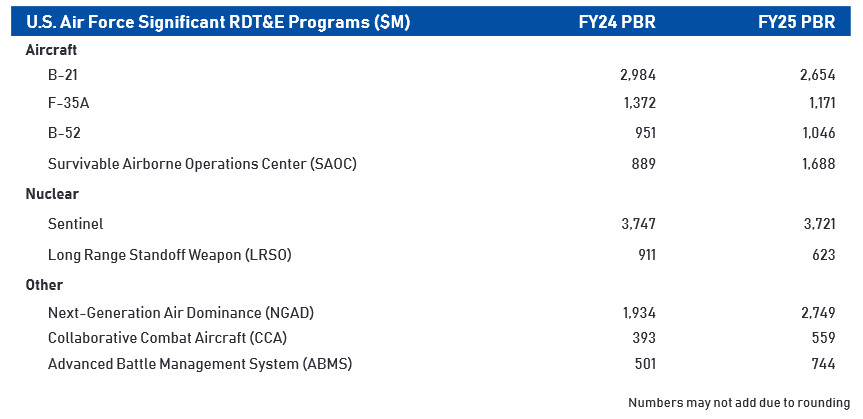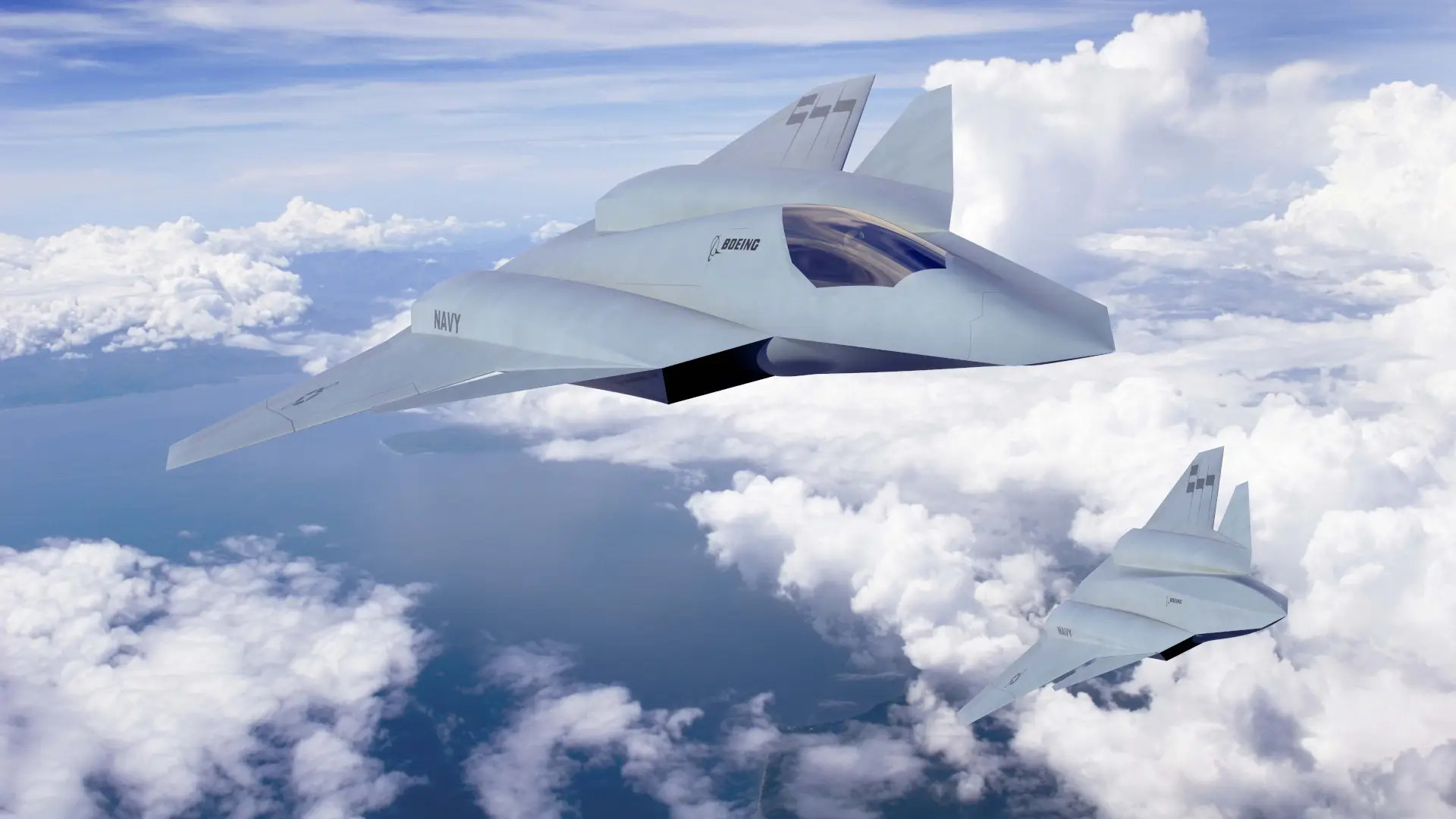The Pentagon’s proposed Fiscal Year 2025 budget includes significant developments for the U.S. Air Force and U.S. Navy’s respective programs to develop crewed sixth-generation stealth combat jets in terms of requested funding. The Air Force is looking for $815 million for continued work on its Next Generation Air Dominance jet, a substantial increase over last year’s request. The Navy, on the other hand, is looking to defer almost $1 billion in spending on its F/A-XX program, a major course change from the previous year.
The U.S. military rolled out its budget request for the 2025 Fiscal Year earlier today. Overall, the Pentagon’s $850 billion proposed budget for the next fiscal cycle reflects constraints imposed by the Fiscal Responsibility Act, or FRA, which became law last year. Air Force and Navy officials have said that this prompted them to make tough decisions to balance near-term demands and longer-term modernization efforts.

The Air Force’s Fiscal Year 2025 budget request includes $815 million “for continuing development …. tests of the [NGAD air] vehicle and mission systems and capabilities there,” Air Force Maj. Gen. Mike Greiner, deputy assistant secretary for Budget, told The War Zone and other outlets at a roundtable last week ahead of today’s budget rollout. “Not much we can talk about in an unclassified setting.”
In its 2024 Fiscal Year budget request, the Air Force only explicitly said it was asking for $276 million to support ongoing risk reduction work relating to the NGAD combat jet. The service stood up a dedicated NGAD test force last year and has already been working with secretive demonstrator aircraft for years now.
The Air Force’s overall request for NGAD, year-over-year, has grown from just over $1.9 billion to nearly $2.75 billion.
NGAD is a family of systems, of which the crewed combat jet is only one component. It also includes the Collaborative Combat Aircraft (CCA) drone program, the Next Generation Adaptive Propulsion (NGAP) jet engine program, and other efforts centered around the development of new weapons, electronic warfare suites, sensors, battle management capabilities, and other systems. Some of this other NGAD work, like NGAP, is directly relevant to the NGAD combat jet, but is funded separately. It is also possible, if not probable that NGAD has classified funding streams. All of this makes determining the exact budgeting for the overall NGAD initiative and its subcomponents difficult.

As Maj. Gen. Greiner noted last week, details about the requirements for and planned capabilities of the NGAD combat jet are highly classified. The War Zone has explored the aircraft’s likely performance and sensor, communications, and electronic warfare capabilities in detail based on publicly available information.
The NGAD combat jet is ostensibly intended to replace the F-22 Raptor, but the next-generation aircraft will have much more expansive capabilities and be able to perform a wider array of roles. Among other things, the crewed NGAD aircraft are set to be stealthy ‘quarterbacks’ for the future CCA drones.

The Air Force has previously said that it is hoping to pick a winning NGAD combat jet design sometime later this year, which looks to be reflected in the 2025 Fiscal Year budget request. Secretary of the Air Force Frank Kendall has also said in the past that the plan is to acquire 200 of these advanced aircraft at a cost of “multiple hundreds of millions of dollars” apiece.
Who might be in line to build the NGAD aircraft is unclear, but Northrop Grumman publicly announced it was dropping out of the running as a potential prime contractor last year. Lockheed Martin and Boeing are widely believed to be the remaining contenders as primes. Multiple contractors, large and small, will be involved in the continued development and production of the selected design.
The Navy’s plans for F/A-XX look to be moving in the opposite direction, at least in the near term. The service is seeking some $454 million for this program in the 2025 Fiscal Year, down from the nearly $1.53 billion it asked for last year. The 2024 Fiscal Year request for F/A-XX also represented five percent of all proposed research and development spending in that fiscal cycle and was part of $9 billion in planned spending on the program through Fiscal Year 2028.
F/A-XX has now been “re-phased across the FYDP,” or Future Years Defense Program, a term the Pentagon uses to refer to planning across the next five-year period. With this in mind, it is important to note that we don’t know to what degree the Navy’s new budget request reflects F/A-XX’s current stage of development. What classified funding streams might feed into the program are also unknown.

“In terms of what comes at the top of the list, it is readiness. It is people. It is the today issues that we have to get on top of,” Under Secretary of the Navy Erik Raven told reporters last week ahead of the budget rollout, according to Breaking Defense. “Where our guidance directs us to take risk is in future modernization.”
“So if you look at F/A-XX, or the other X [next-generation] programs, we knowingly took risks in the schedule for [the] development of those programs in order to prioritize those key investments — whether that’s readiness, or investing in our people, or undersea, to make sure that we make those programs whole,” Raven added, according to Defense News.
However, “we’re absolutely committed to the capacity and lethality of the carrier wing,” Rear Adm. Ben Reynolds, deputy assistant secretary of the Navy for budget, also told reporters last week, per Breaking Defense. “The capacity [and] the firepower of the air wing is orders of magnitude above anything else that that [the Defense Department] has.”
As with the Air Force’s NGAD combat jet, publicly available details about what the Navy is looking for in F/A-XX are limited. The service has said that the aircraft will be a carrier-capable design and that it is also expected to work closely with future advanced drones. The Navy has separately said that it ultimately expects at least 60 percent of its future carrier air wings to be uncrewed. The service is also actively collaborating with the Air Force on various aspects of the CCA program, including mission systems, control architectures, and autonomous technologies.

The Navy has yet to publicly announce an F/A-XX competition, but Boeing, Lockheed Martin, and Northrop Grumman are assumed to be at the top of the list of potential prime contractors.
Northrop Grumman said it would pursue “other opportunities in military aircraft” when it announced it would no longer be competing for the Air Force’s NGAD combat jet competition. This was taken by some to be a possible reference to F/A-XX.
Though neither F/A-XX nor the Air Force’s NGAD program was explicitly mentioned, Boeing Air Dominance Vice President Steve Nordlund also said his company was “planning for our future” and that “building fighter aircraft is in our DNA” in an announcement last year about the expected shuttering of the F/A-18E/F Super Hornet production line.

It is important to remember that Congress will have the final say on the entire Department of Defense budget for the 2025 Fiscal Year. So, there is always the possibility that the approved funding for the Air Force NGAD combat jet and the Navy F/A-XX programs could be different from what has been requested.
The two services have already clearly made different choices regarding how to pursue their respective next-generation combat jet programs in light of new budgetary constraints.
Contact the author: joe@twz.com
